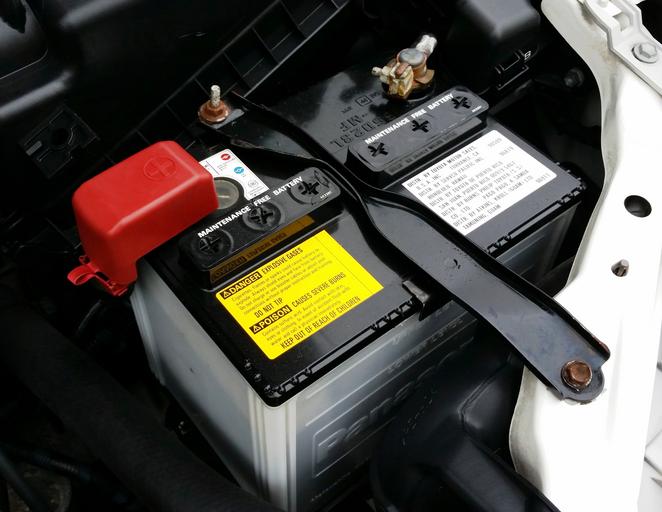
The car battery is designed to last for some period of time before it is replaced. You are not meant to use a factory-fitted battery for the rest of the car’s lifespan. A time will come when the battery will go bad and needs to be replaced. Therefore, what should you do after replacing the car battery?
After replacing your car battery, inspect the battery terminals and connections to ensure they are securely in place, start the car and allow it to idle for a while, inspect the battery voltage, and drive the car to allow the alternator to charge the new battery to ensure it’s functioning correctly.
What to Do After Replacing Car Battery
Below are the things to do after replacing your car battery to ensure the smooth operation of your car:
1. Inspect Battery Terminals and Connections
The first to do after replacing the car battery is to inspect the terminals and cable connections to ensure they are securely in place. If you have loose connections, it can lead to starting issues and electrical problems.
You need to make sure the battery is placed well in its location as well as the cables. If the battery comes with a cover, use it to cover the battery terminals to prevent water, etc., from touching the terminal.
2. Apply Anti-Corrosion Grease on the Terminals
After replacing your battery, you need to apply a thin layer of anti-corrosion grease or petroleum jelly on the terminals to prevent corrosion on the battery terminals. Doing this will help you to maintain a clean and reliable electrical connection.
Trust me, you don’t want to battle battery terminal corrosion. It can be frustrating. I’ve never had a battery terminal corrosion before but I have a friend who once suffered such in his 2008 Honda Accord. The blueish thing won’t just let him be. Applying the anti-corrosion is really important.
3. Double-Check Your Work Before Closing the Hood
Before closing the hood, double-check all your connections to ensure they are tight and secure. Any loose or improperly connected cables can lead to problems.
Ensure that the positive (+) terminal is connected to the positive cable and the negative (-) terminal to the negative cable. Putting these connections in the wrong way can damage the car’s electrical system.
4. Test the Battery by Starting the Car
It’s time to start the car but first, turn on your car’s ignition to see if the vehicle starts without any issues. If it doesn’t start or there are difficulties, review your connections and make sure they are secure. It might hesitate to start at first but it will eventually start.
5. Inspect the Battery Voltage
You need to inspect the voltage after replacing your battery to ensure the newly replaced battery is working correctly. You can do this by using a voltmeter.
If the voltage is not at the number it is supposed to be which is usually 13.8 and 14.5 volts when the engine is at idle, then there’s no need to use the battery because it will affect the electrical system of the car.
However, this shouldn’t be the case as long as your replacement battery is the right amp for your car. If your car’s manufacturer recommends using a 75 amp battery, I don’t see any reason why you should use anything lower than that. Doing so may affect the electrical features of your car.
6. Reset the Electronics, Radios, and Windows
Some electronic systems may require resetting or reprogramming after a battery replacement. Examples include the clock, radio presets, and the window, etc.
For example, I currently drive a 2nd Gen Lexus IS350 and anytime I disconnect my battery, I must reset all the window glasses excluding the driver passenger window. Otherwise, the glass will not work from the central control button on the driver-side door.
It might be different in your car. Your own may be something else such as the radio, etc. So whatever it is that needs to be set, do them after replacing the battery to avoid doing them while driving. It can distract you and you may end up running a red light, etc.
7. Take a Short Drive in the Car
After resetting your electronics and windows, take the car for a short drive. This allows the alternator to charge the new battery and ensures that it’s functioning correctly.
It also gives you the opportunity to detect any immediate issues. Once everything is in place, you can drive as long as you want.
8. Monitor the Battery
While you drive over the following days and weeks, monitor the performance of the new battery. Pay attention to how the vehicle starts and any warning lights on the dashboard. If you notice any problems or signs of battery-related issues, fix them immediately.
9. Keep Maintenance Records
It’s a good practice to keep records of maintenance, including the date of battery replacement. This can be helpful for tracking the lifespan of the battery and making sure you replace it at the appropriate intervals.
It can also be helpful when you want to sell the car. Presenting the maintenance records to the buyer will show how well the car has been maintained. It will help boost the sale and may even add value to the sale price.
10. Properly Dispose of the Old Battery
After all these are done, it’s time to dispose of the old battery. You can dispose of the old battery at a recycling center or a location that accepts used car batteries.
Since automotive batteries contain hazardous materials, responsible disposal is essential for environmental and safety reasons.
Meanwhile, it is important to note that after replacing your battery, your car may rough idle for a while. Don’t panic. Allow the car to idle for a while, the rough idle will stop.
Benefits of Replacing Your Car Battery
The benefits of replacing your car battery are:
- It will Improve Your Vehicle Reliability: Replacing your car battery with a new one will provide reliability to your car. Old and weak batteries can lead to frequent starting problems, leaving you stranded at inconvenient times.
- To Serve You Better in Cold Weather: Car batteries are less effective in cold temperatures. A new battery can better handle cold weather to ensure your car starts as long as you want.
- It will Enhance your Electrical System Performance: A well-functioning battery supports the electrical system of your car. It powers lights, accessories, and electronic components, ensuring they work properly.
- It Gives Peace of Mind: Knowing that you have a reliable battery in your car provides peace of mind, especially on long trips or in adverse weather conditions. You can have confidence that your car will start and perform as expected.
- It Prevents Acid Leaks: Old batteries are more prone to acid leakage, which can damage surrounding components and lead to corrosion. A new battery is less likely to leak and cause such problems.
However, replacing your car battery when due is very important. Once you notice that the battery has reached the end of its lifespan, replace it to avoid having issues with it. You don’t want to start looking for who to call when your battery dies in the middle of nowhere.
Conclusion
Replacing the car battery is an easy thing to do, however, you need to be careful while doing the replacement. After the replacement is done, endeavor to inspect the battery terminals and cable connections to be sure they are properly connected, apply a thin layer of anti-corrosion grease or petroleum jelly to the terminals, and start the car.
It is also important to reset your car electronics such as your radio, car windows, etc. Test drive the car and monitor the voltage to be sure it is giving out the right voltage.









